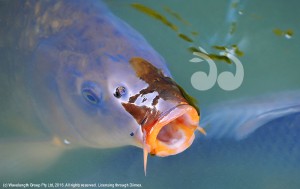Plan to Eradicate Carp Welcomed
CARP have reached the Moonan area and are increasing in numbers in Glenbawn Dam, so local fishing enthusiasts hope the government’s plan to release a carp-specific herpesvirus will soon eradicate the pest.
The CSIRO, the NSW Department of Primary Industries and the Invasive Animals CRC have spent years assessing the viability of the virus in Australia, which they aim to release by the end of 2018.
Sid Collison, secretary and treasurer of the Barrington-Gloucester Tops Fishing Club, said they would like to see the pest gone, but hope the biological control does not have any unintended consequences when it is released.
“We don’t have a great track record in Australia, we let the fox and rabbit go and then there were the cane toads, so I hope there is the right science behind it,” said Mr Collison.
“They have trialled it overseas and it has been successful,” he said.
“They have reached as far as Moonan now, there is carp in Glenbawn Dam, not as much as there are in Chaffey Dam or Lake Keepit but at Glenbawn Dam they are starting to get more prolific,” he said.
“They are a pest and you are obliged if you catch one to kill it and leave it on the banks, it must not return to the water,” Sid Collison said.
Yesterday Barnaby Joyce, Minister for Agriculture and Water Resources visited the Peel River in Tamworth to announce the plan to eradicate carp in Australian within 30 years.
“Carp are the rabbit of our waterways and we’ve now got a once-in-a-lifetime opportunity to manage one of this country’s most devastating pests,” Mr Joyce said.
“Carp have decimated native fish populations and reduced water quality since they became established in Australia’s waterways in the 1960s,” he said.
“They are ecosystem vandals—they muddy river systems, uproot vegetation, cause erosion, contribute to algal blooms, and out-compete native fish for food, driving many species to the brink of extinction.
“The economic impact of common carp has been estimated at up to half a billion dollars each year, and they make up 80 to 90 per cent of fish biomass in the Murray-Darling Basin alone.
“As much as people may want the virus released immediately, we need to ensure it is safe, along with developing strategies around the clean-up program and use of harvested carp biomass—with carp biomass in our waterways estimated at between 500,000 tonnes and 2 million tonnes,” Mr Joyce said.
For more information visit agriculture.gov.au/carp-plan.
 scone.com.au
scone.com.au